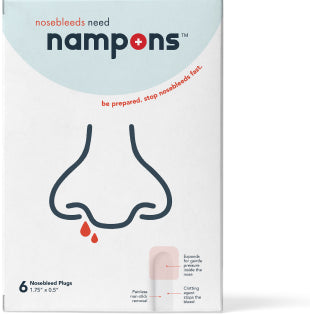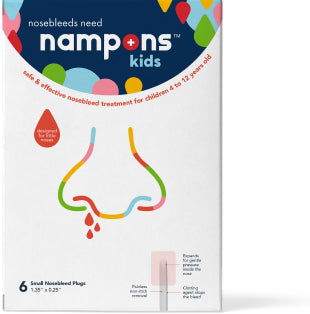This article was written by Dr. Naheed Ali, PhD. Dr. Ali earned an MD degree in 2008 and later completed Harvard Medical School's lifestyle medicine training in 2012, before obtaining a PhD in holistic health elsewhere in 2013. He’s also certified in clinical research by National Institutes of Health (NIH).
Nosebleeds are a common phenomenon that some of us have experienced at some point in our lives. However, have you ever wondered why you might experience a nosebleed in only one nostril? This article delves into the causes and possible treatments of this health concern.
What Causes Nosebleeds in One Nostril?
A nosebleed that originates from one nostril is typically due to a rupture in the blood vessels located in the front part of your nose, a condition known as anterior epistaxis. Anterior epistaxis is the most common type of nosebleed and is usually not a cause for concern [1]. However, the question remains: why does this occur in one nostril only?
The explanation is simpler than you might think. The septum, a thin wall that divides the nose into two halves, allows each half to function somewhat independently of the other. If an event triggers a nosebleed, it will usually affect only one-half, leading to a bleed from one nostril. This could be the result of a variety of triggers, including dry air, nose picking, vigorous nose blowing, certain medications, alcohol, smoking, or even a bump to the nose.
Why Are Nosebleeds More Frequent in One Nostril?
If you notice frequent nosebleeds from the same nostril, it's likely due to a vulnerable area in that part of the nose that is more prone to drying out or injury. Other potential causes could be a deviated septum, a localized infection, or a growth in the nose, such as a polyp or tumor. While the latter is less common, if you experience recurring nosebleeds, it's essential to seek medical attention to rule out more serious conditions.
How to Prevent One-Nostril Nosebleeds
Keeping the nasal passages moisturized can be a simple yet effective preventative measure. The nasal lining loves moisture, and maintaining a moist environment can help keep nosebleeds at bay. Here's how [2]:
Use a Humidifier: Nosebleeds can become worse in dry air. A humidifier can help keep moisture in your nasal passages, especially in dry climates or during the winter.
Nasal Saline Sprays: Over-the-counter saline sprays are a safe way to add moisture directly to your nasal lining.
Stay Hydrated: Drinking plenty of fluids helps keep your entire body hydrated, including the lining of your nose.
How to Stop One-Nostril Nosebleeds
When a nosebleed strikes, it can be both alarming and inconvenient. Fortunately, there are some proven strategies to stop the bleeding:
Nasal Tampons: Products like Nampons™ are specifically designed to handle nosebleeds. These tampons are inserted into the nostril, where they expand to apply pressure to the bleeding vessel and promote clotting. They are clinically proven and effective for controlling nosebleeds.
First Aid Measures: Lean slightly forward (to avoid swallowing blood), pinch your nostrils shut, and breathe through your mouth. Hold this position for 5–10 minutes. This puts pressure on the part of your nose that is bleeding and can make the blood stop flowing [3].
When to See a Doctor
While occasional nosebleeds aren't typically a cause for concern, there are certain situations when it's time to seek medical attention:
Frequent nosebleeds: It's a good idea to visit a doctor if you have nosebleeds more frequently than once per week.
Prolonged Bleeding: If your nosebleed lasts for more than 20 minutes, despite applying pressure and using a nasal tampon, you should seek immediate medical attention.
Other Symptoms: Consult a doctor right away if you are experiencing additional symptoms like unexplained weight loss, frequent headaches, or a persistent lump in your neck or nose.
Other Treatment Options
While most nosebleeds can be handled with at-home treatments, there are times when professional medical intervention is necessary. Here are some additional treatment options that might be considered:
Medications: If an underlying health condition is causing your nosebleeds, treating the root cause with appropriate medications can help. For instance, if you have high blood pressure, regulating it with prescribed drugs can alleviate nosebleeds.
Topical Nasal Treatments: Topical medications like antibiotic ointments or nasal sprays can be used to soothe irritated nasal passages and prevent bleeding.
Nasal Balloons: In some instances, a healthcare provider may insert a special balloon into your nose and inflate it. This applies pressure to the bleeding point and helps stop the nosebleed.
Endoscopic Procedures: In persistent or severe cases, your doctor might recommend an endoscopic procedure. A thin, flexible tube with a camera attached to its end is used to identify the exact location of the bleeding, and subsequent treatments are applied [4].
Septoplasty: If a deviated septum is causing recurrent nosebleeds, surgical correction known as septoplasty can be recommended [5].
In Conclusion
While nosebleeds in one nostril can be a nuisance, they are usually easy to manage and treat. Keeping your nostrils moisturized, using products like Nampons™ when a nosebleed occurs, and knowing when to seek medical help are all important steps in managing this common issue.
If you're dealing with frequent nosebleeds, you don't have to go it alone. There's a whole community out there with resources and products to help you. Head over to Nampons™ for clinically proven solutions to nosebleeds. Check out the other blogs for more insights and information about nosebleeds and how to handle them. Remember, knowledge is power, and with the right information, you can take control of your nosebleeds.


